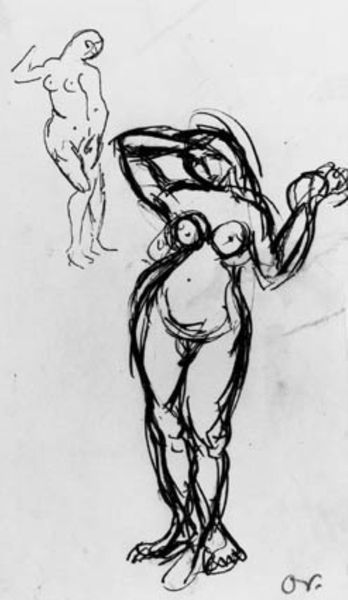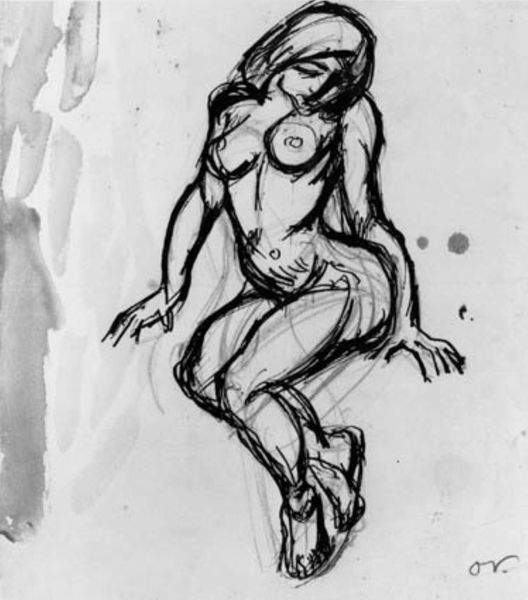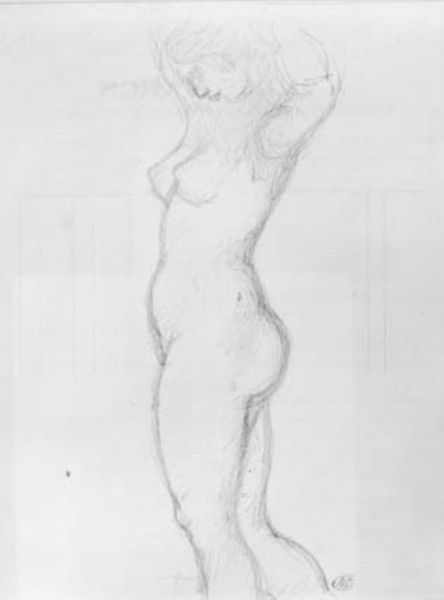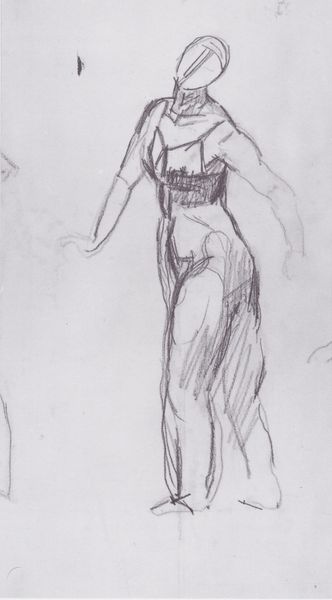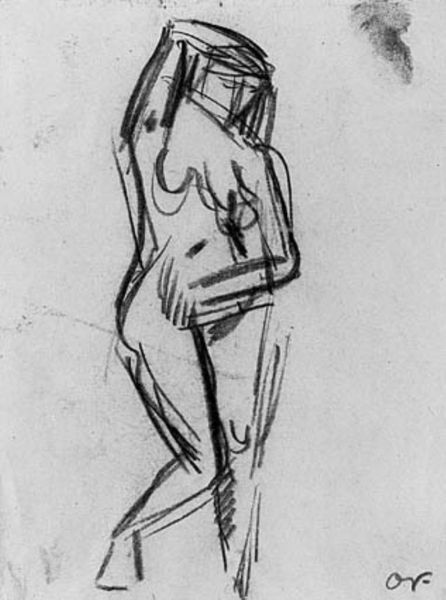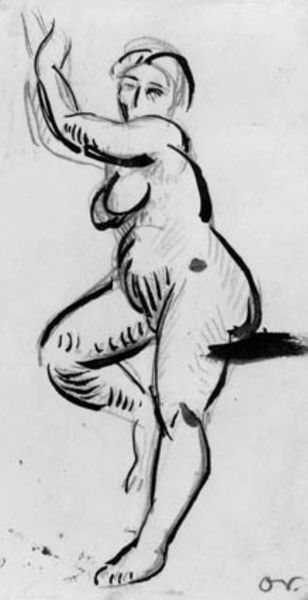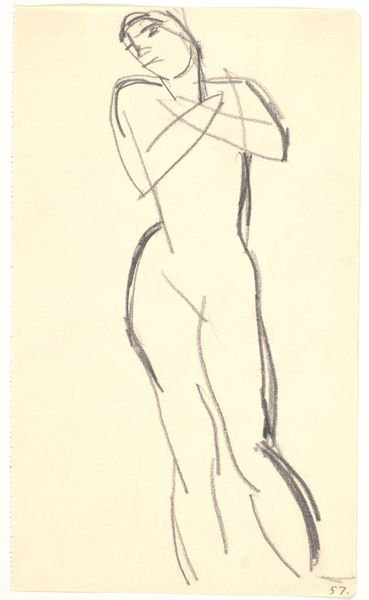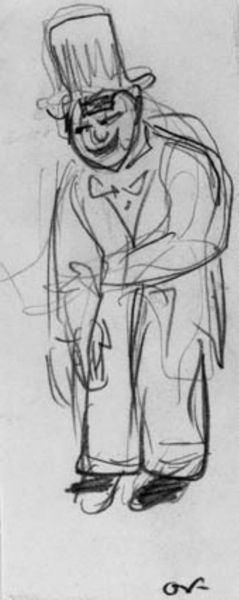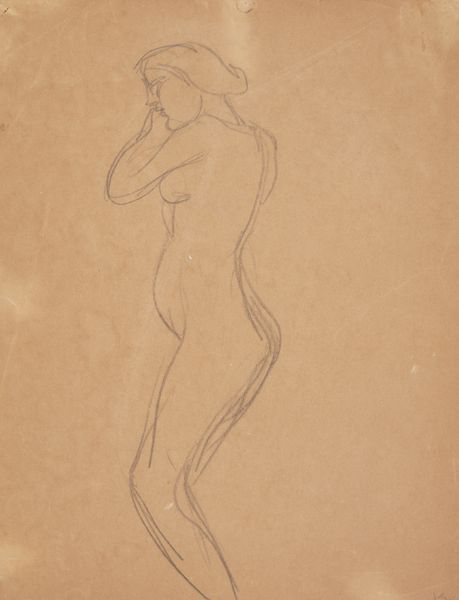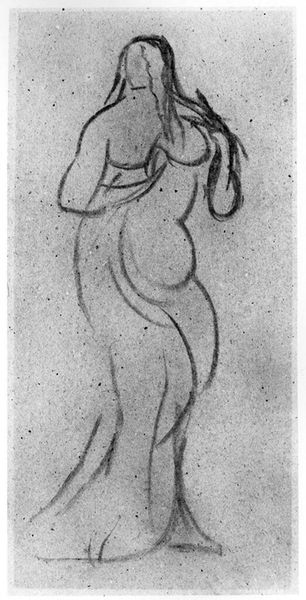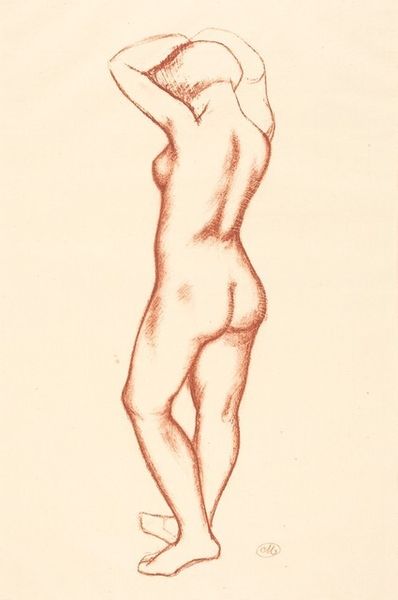
Figurgruppe. To stående kvindelige modeller, en face og rygvendt. 1908 - 1909
0:00
0:00
Dimensions: 172 mm (height) x 105 mm (width) (monteringsmaal), 159 mm (height) x 98 mm (width) (bladmaal)
Curator: This drawing, "Figurgruppe. To stående kvindelige modeller, en face og rygvendt," was created by Othon Friesz between 1908 and 1909 and resides here at the SMK, Statens Museum for Kunst. Editor: Immediately, I'm struck by the rawness of the lines, the unadorned depiction of the figures. There's an intimacy here, wouldn't you say? It's not idealized. Curator: Yes, I think that speaks directly to the conditions in which Friesz and others in the Post-Impressionist movement operated. There was less focus on classical ideals, instead an interest in exploring form and representing everyday life as it was seen and felt. I find it so refreshing that the artist emphasizes materiality: raw charcoal meeting paper. Editor: The deliberate use of charcoal lends itself well to representing the bodies themselves. This period witnessed profound social shifts and evolving perceptions of the female body. This drawing reflects this shift. Curator: The drawing material itself, charcoal, of course, implies a level of preparation; and there would have been considerations for sourcing such materials. But it is very common medium, accessible. As well as it being a common sketching medium it can suggest ideas such as ephemerality and urgency in its ease of use. The use of drawings to then plan and produce works like sculpture and paintings would have influenced choices to capture studies as fast as possible for the needs of a productive atelier. Editor: Exactly, in the context of early 20th-century societal norms and artistic conventions, Friesz’s figuration might have been read in terms of the avant-garde’s break from established aesthetics. These images contributed to evolving representations of the female body and sexuality. The use of materials like charcoal could have emphasized the everyday or challenging expectations of high art and who it served. Curator: Seeing the artist working through these studies, trying out compositions. One thinks also of the societal changes going on around the figures who were being drawn and of those who were involved in the drawing. It is all part of a collaborative human process. Editor: Indeed, stepping back and seeing these not just as isolated images but within this much broader historical perspective gives such valuable insights. Curator: Yes, it shows art's relationship to a particular place, person, and time.
Comments
No comments
Be the first to comment and join the conversation on the ultimate creative platform.
